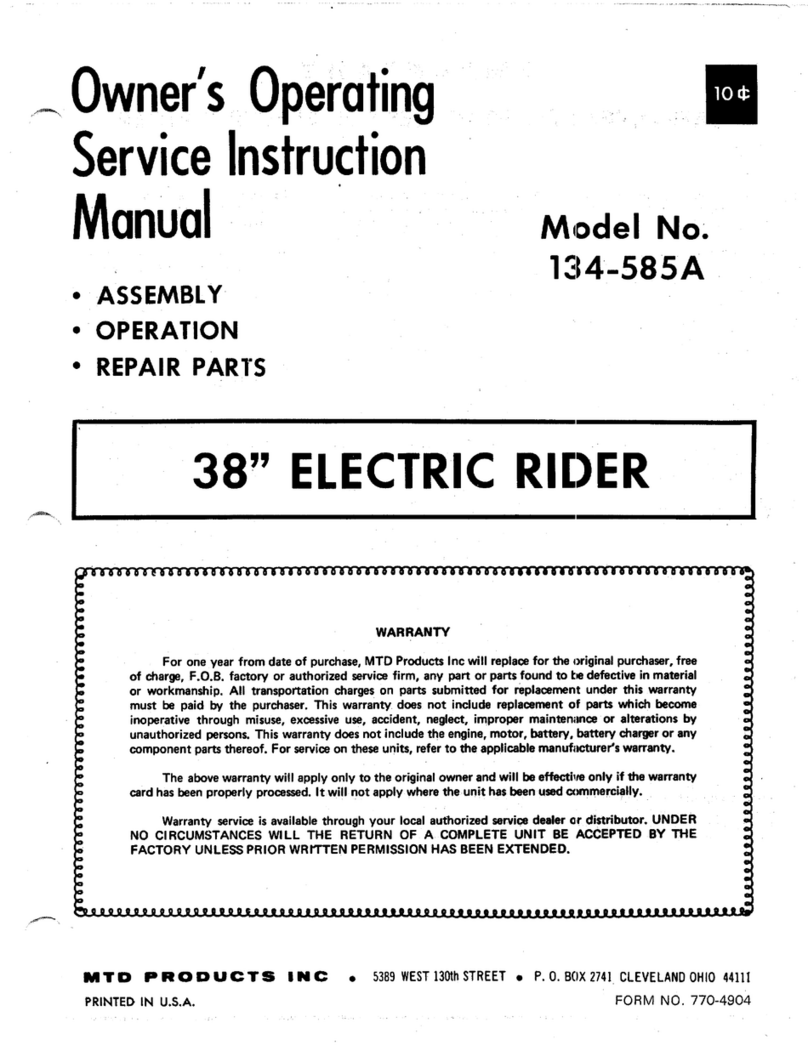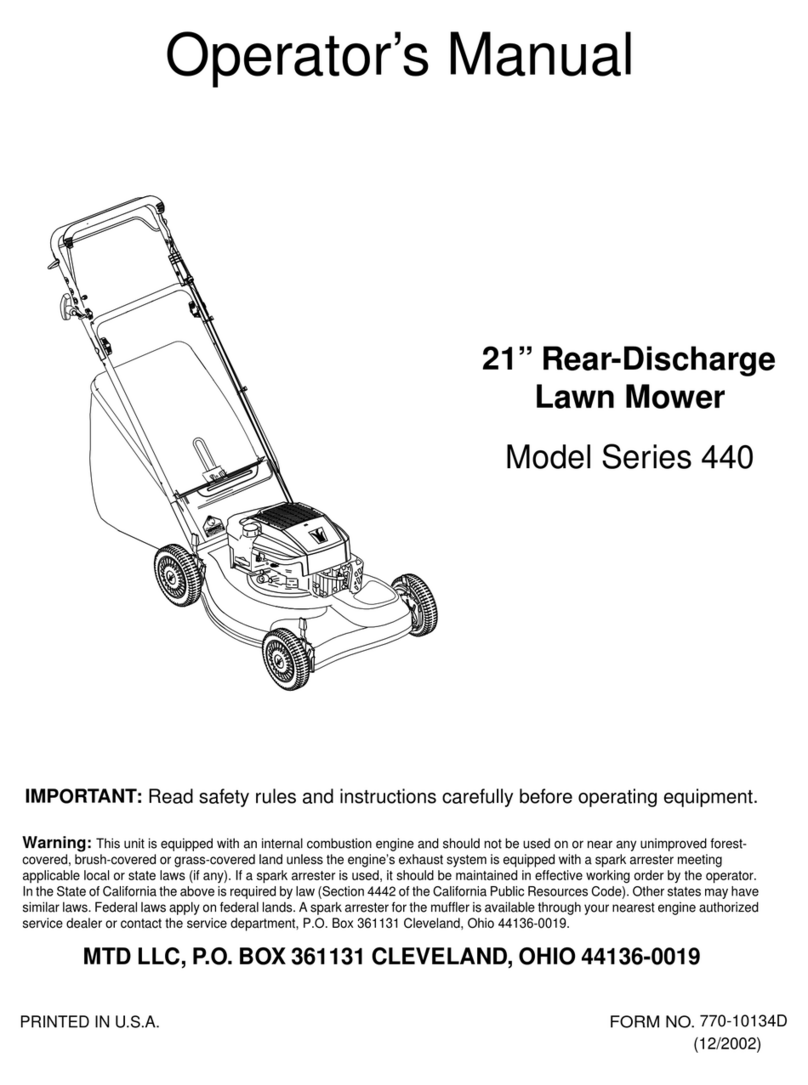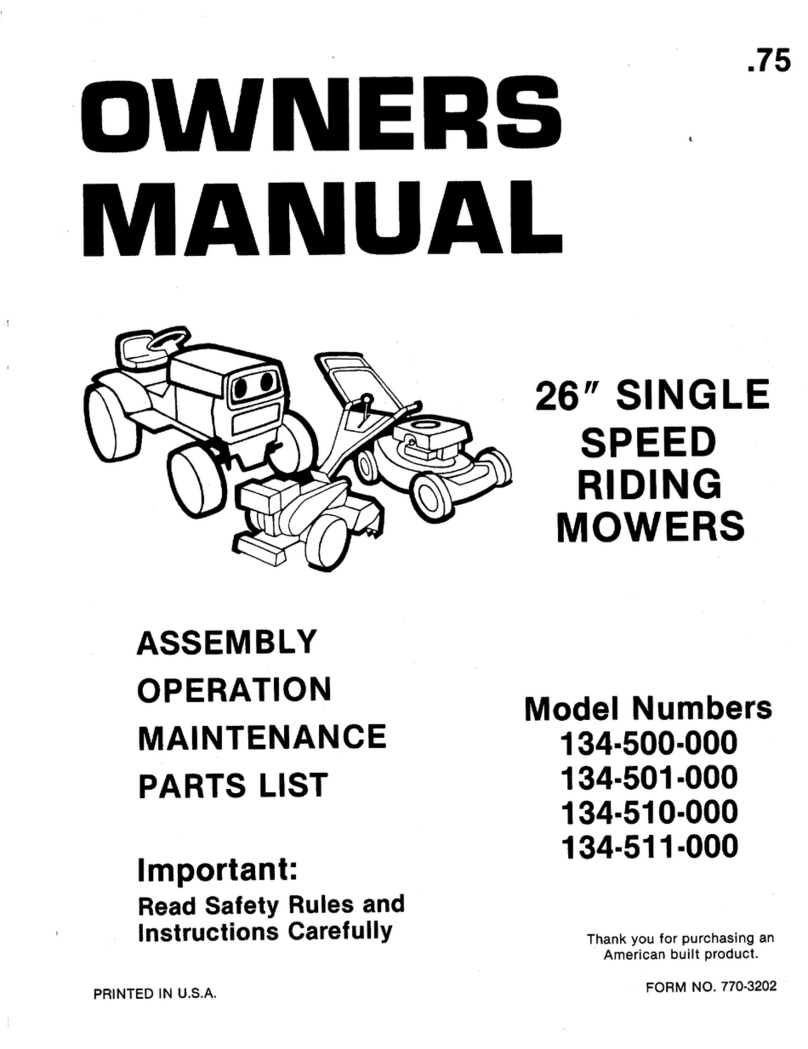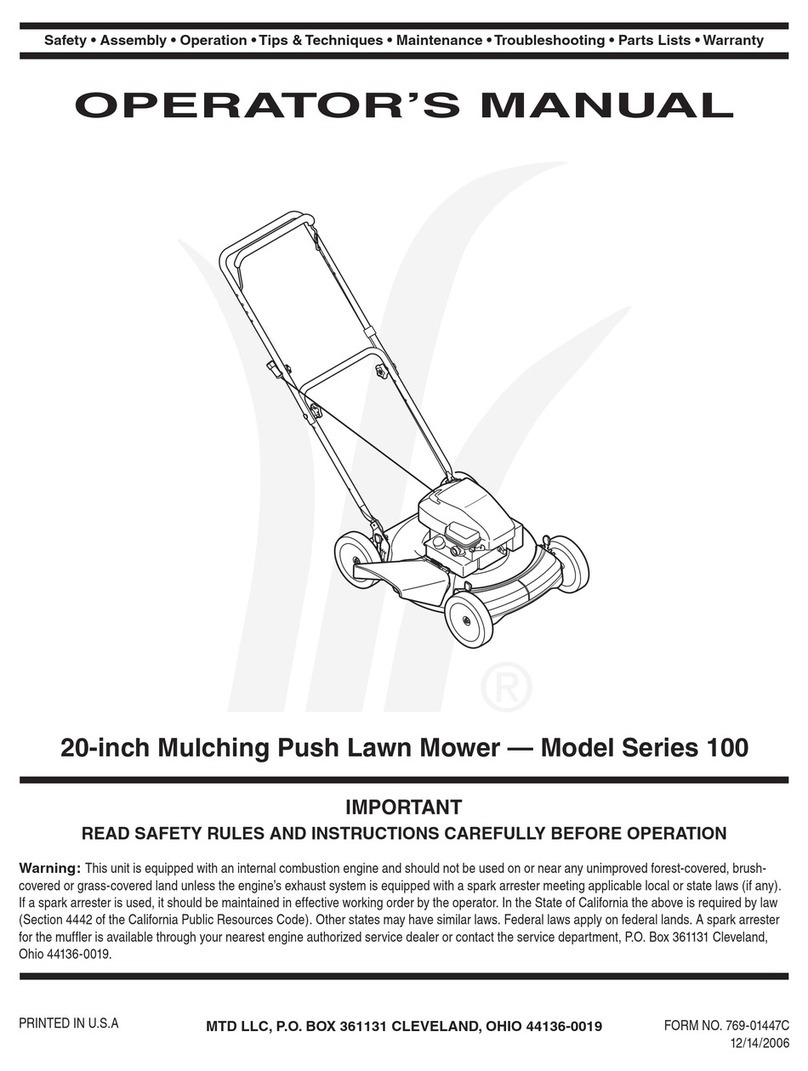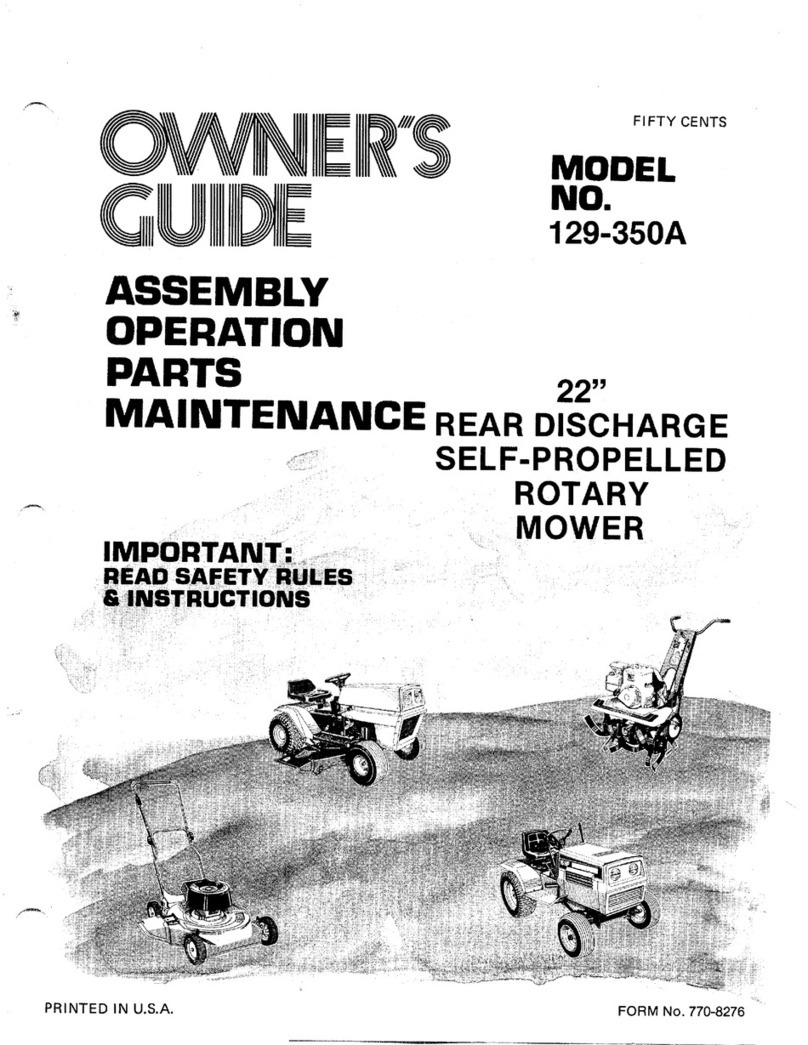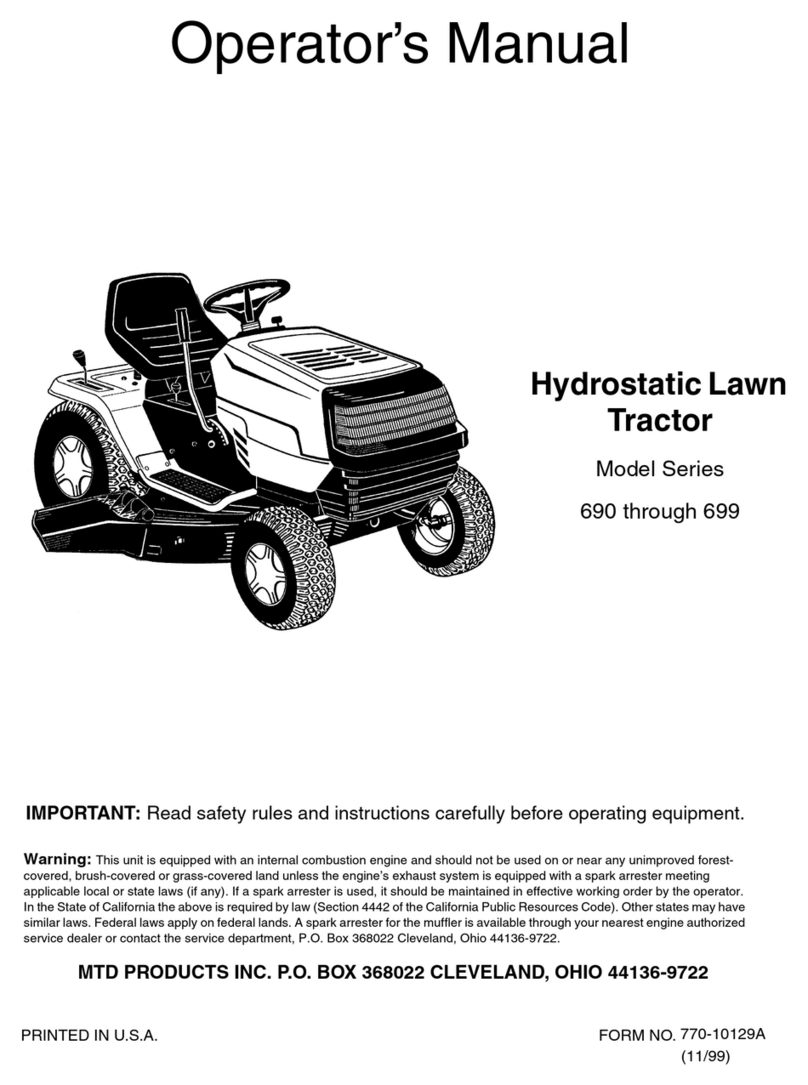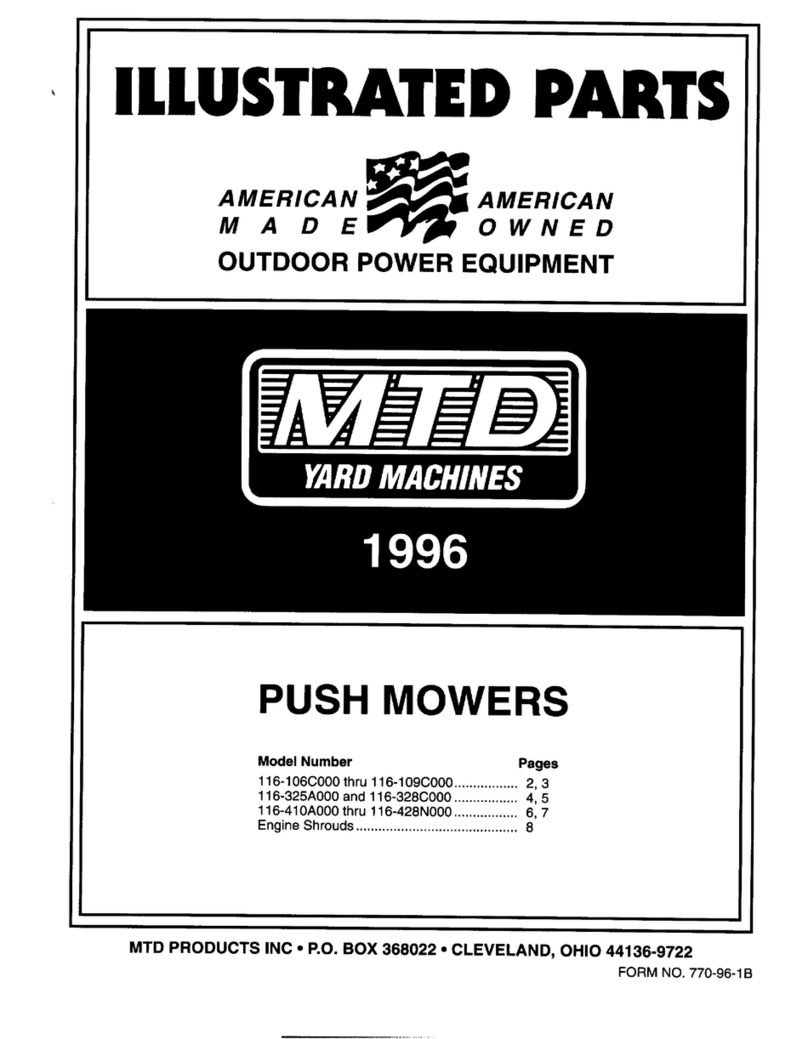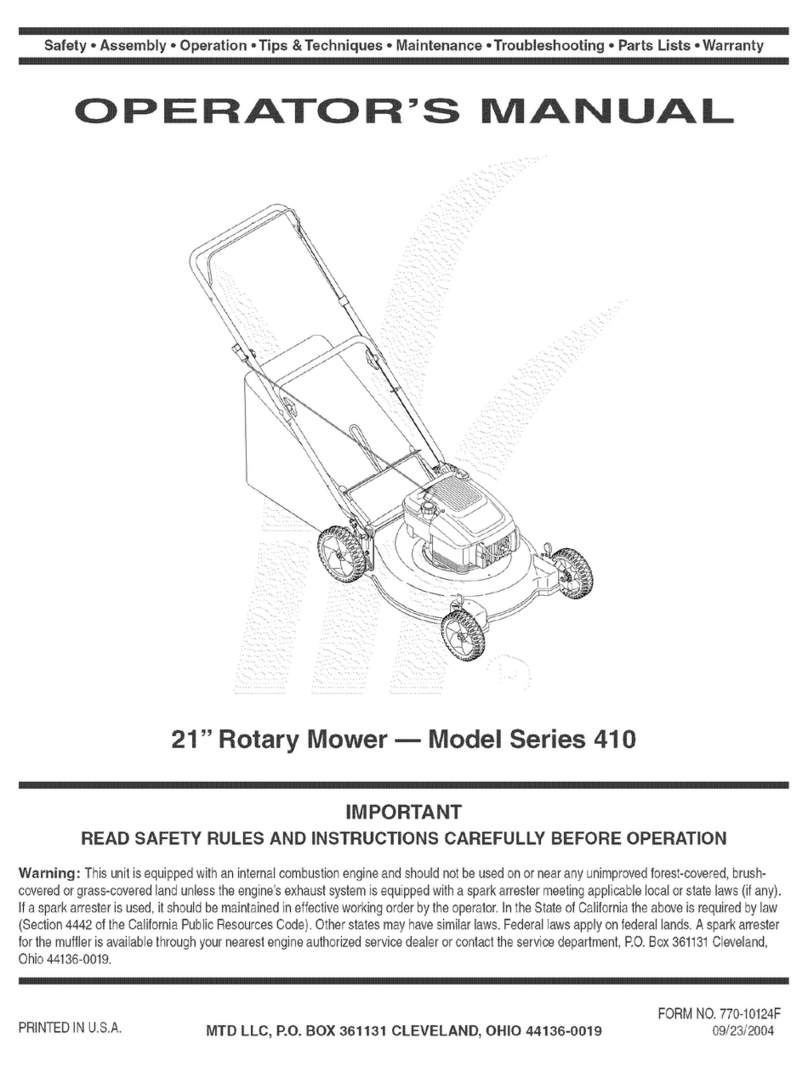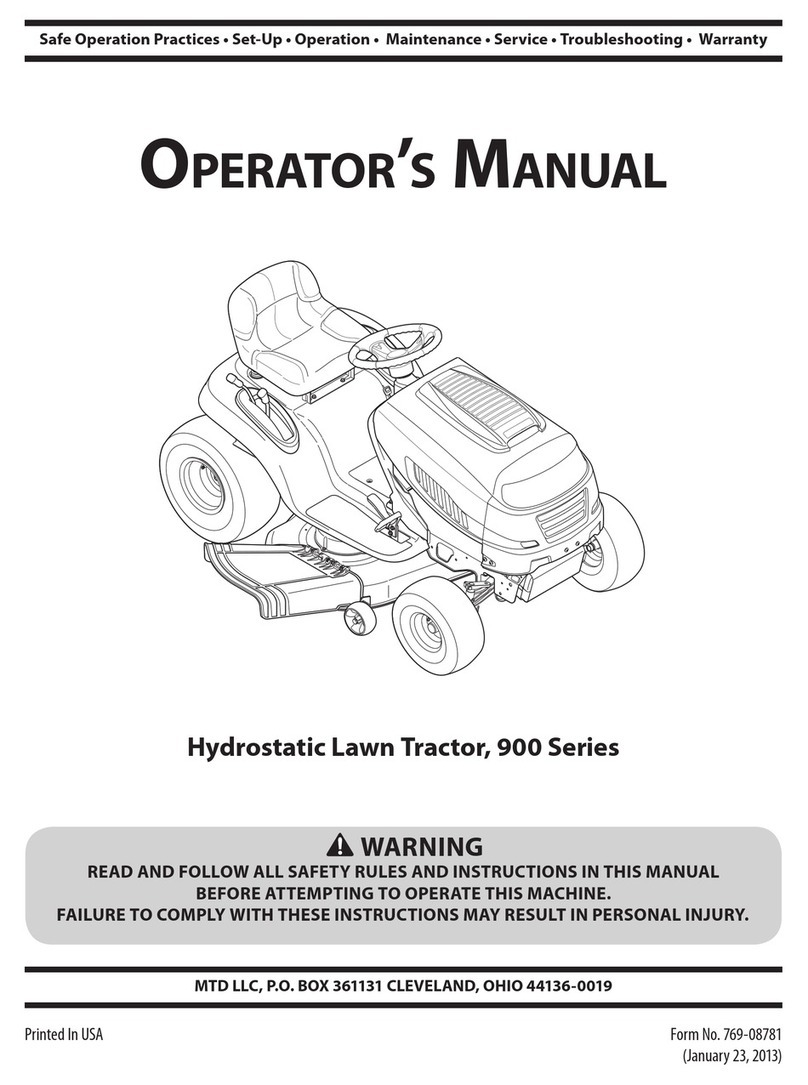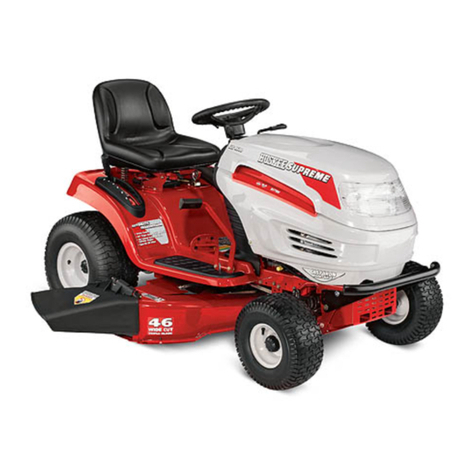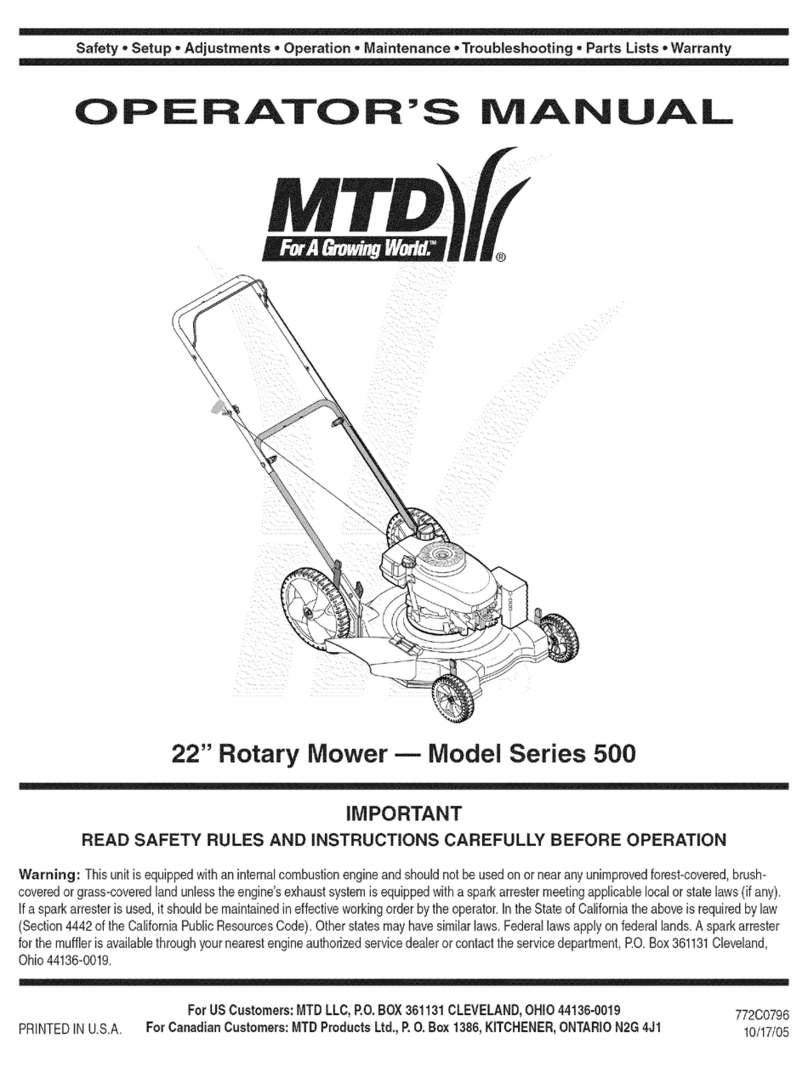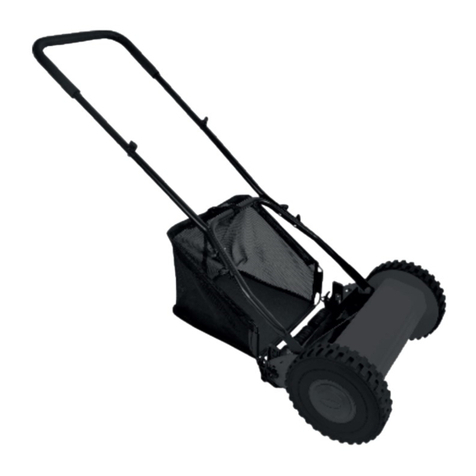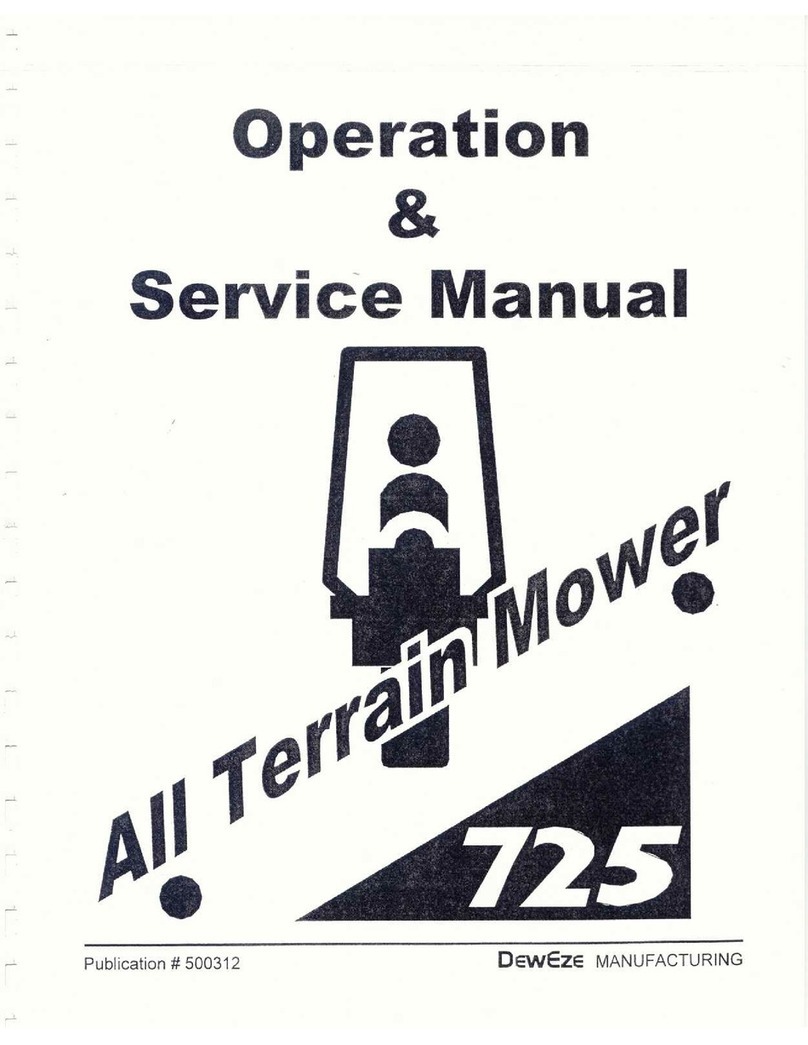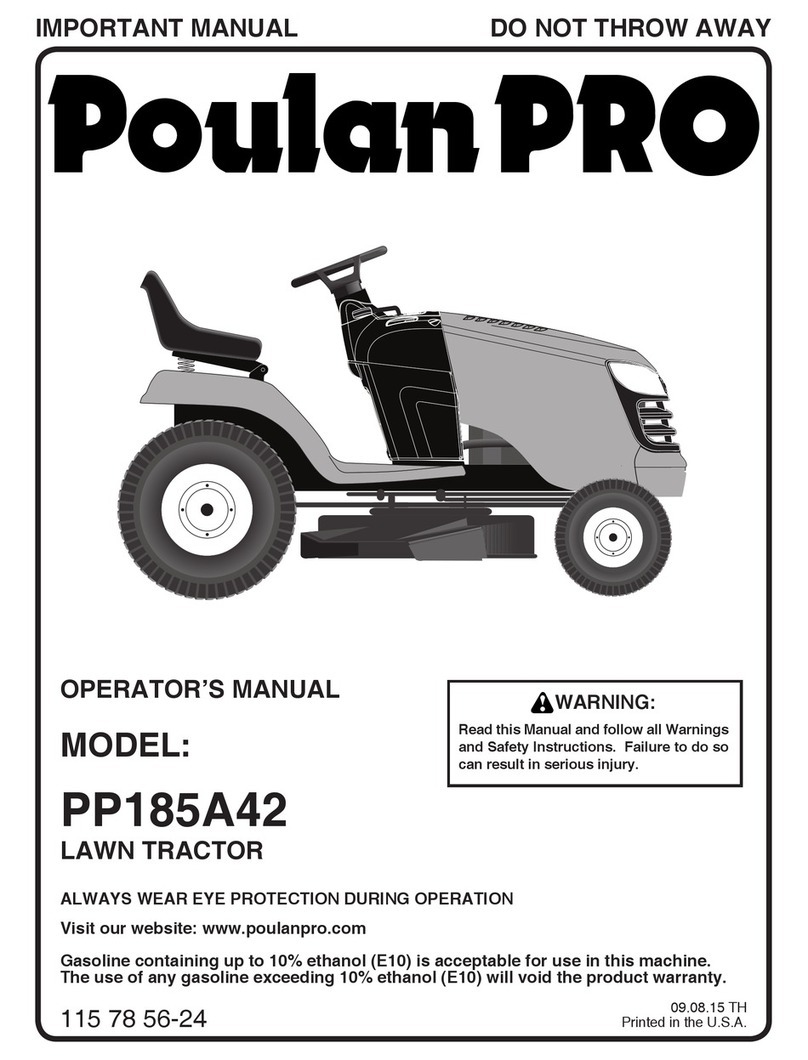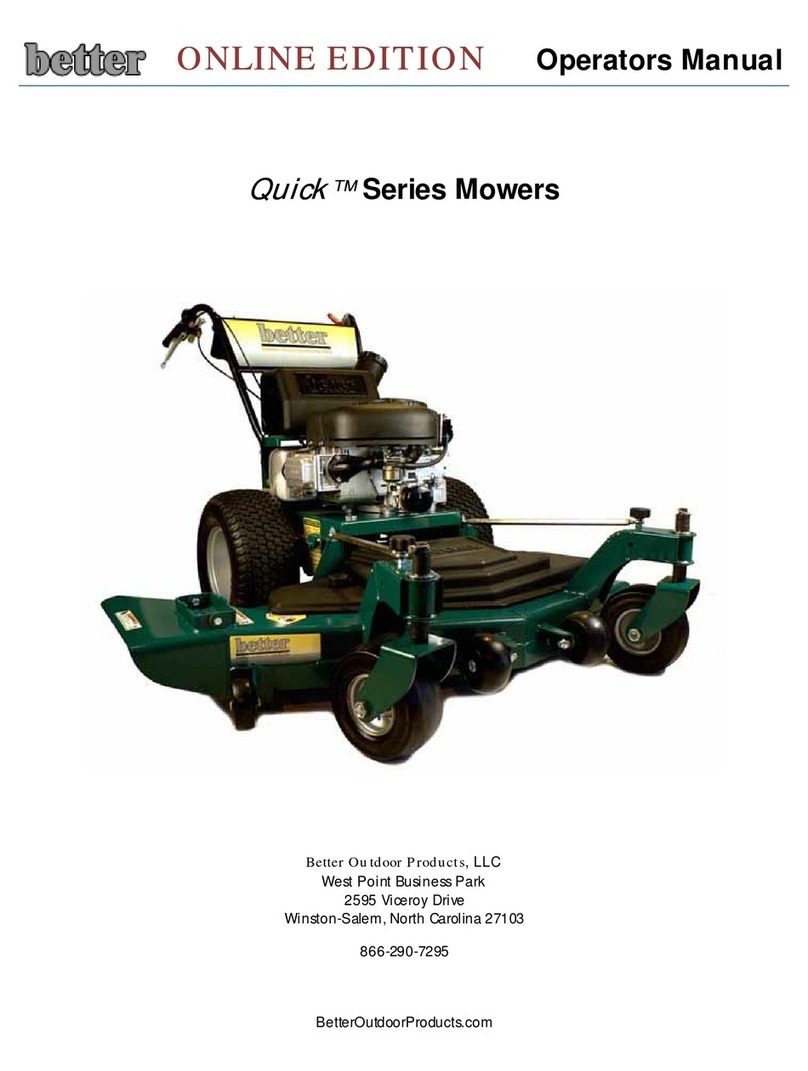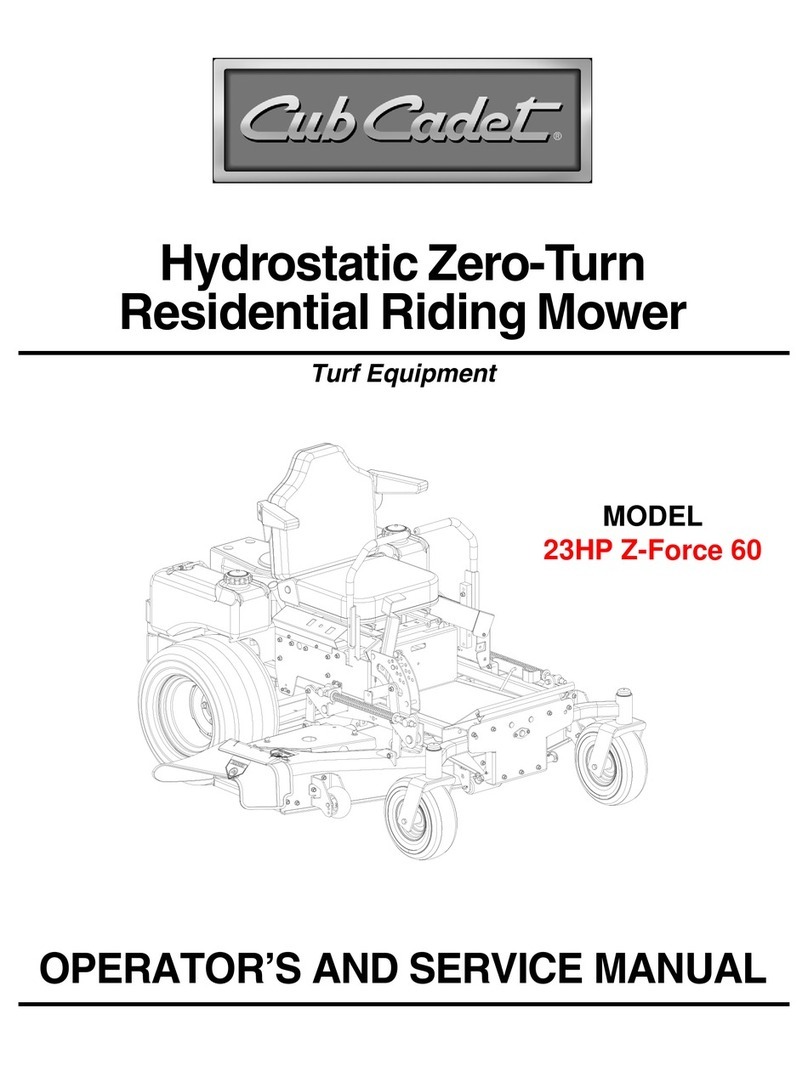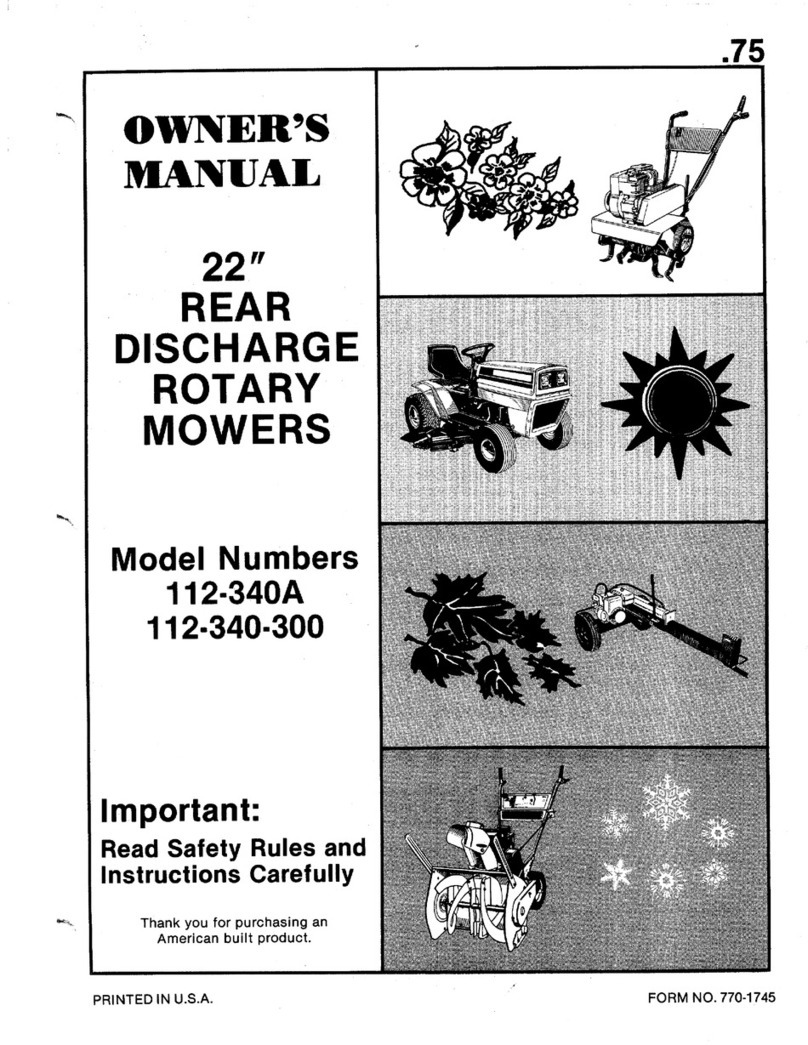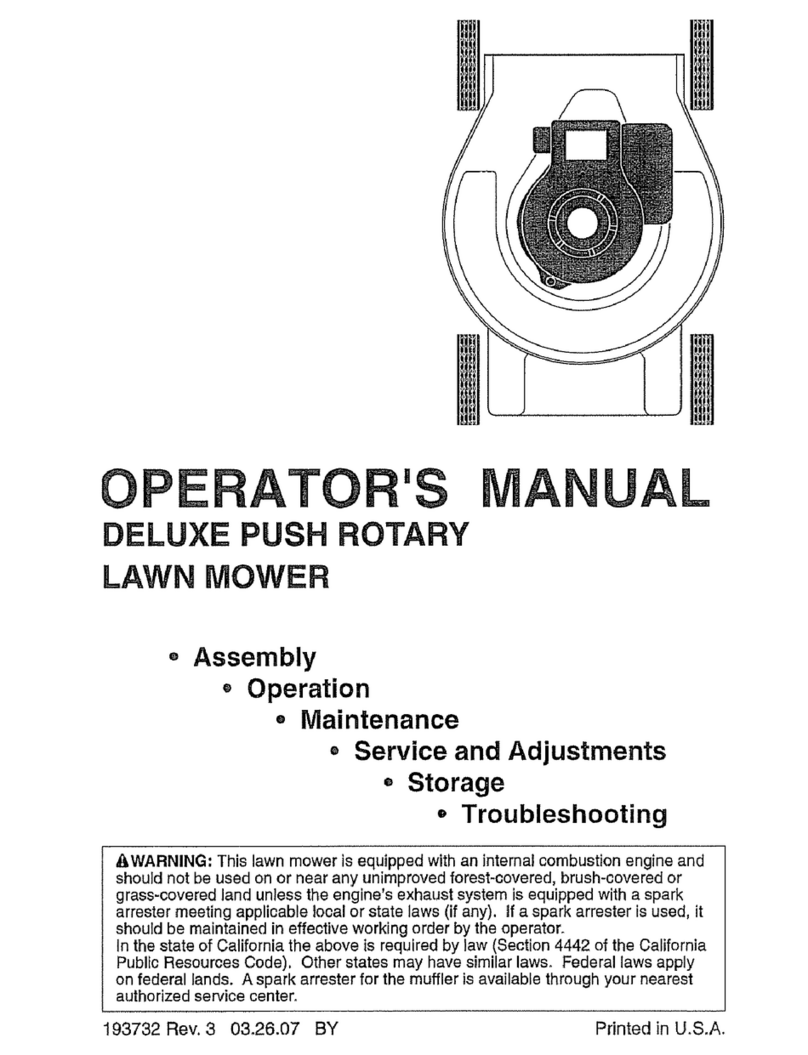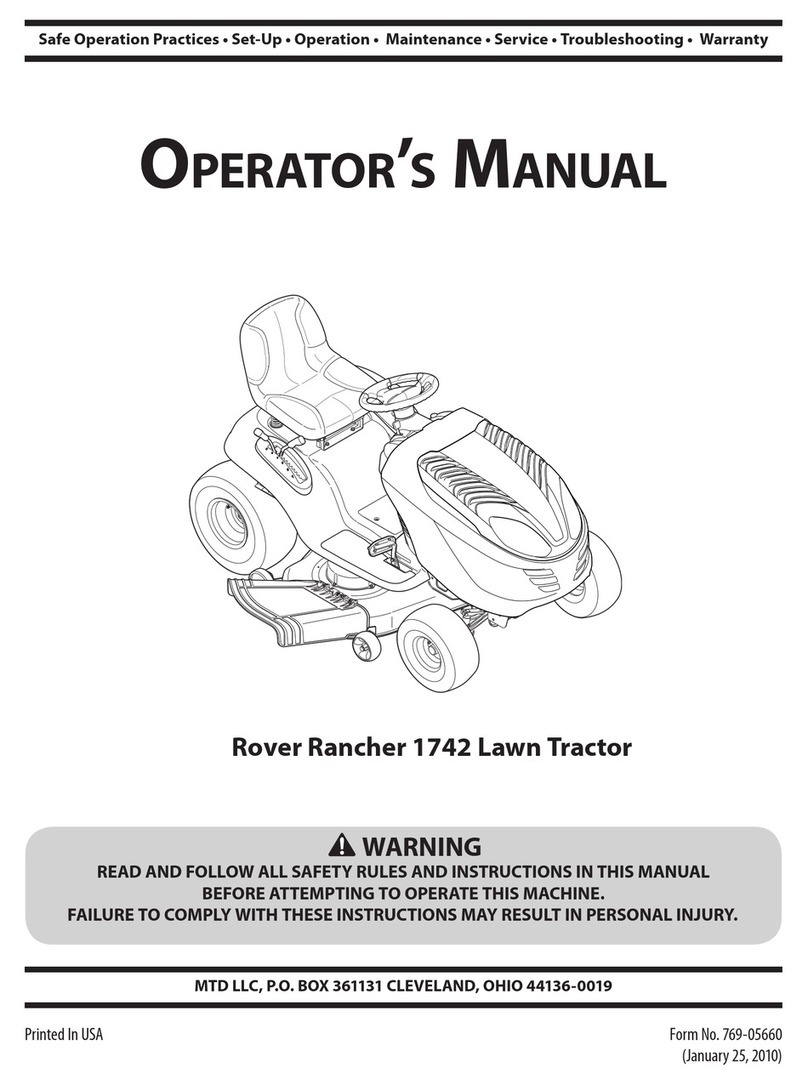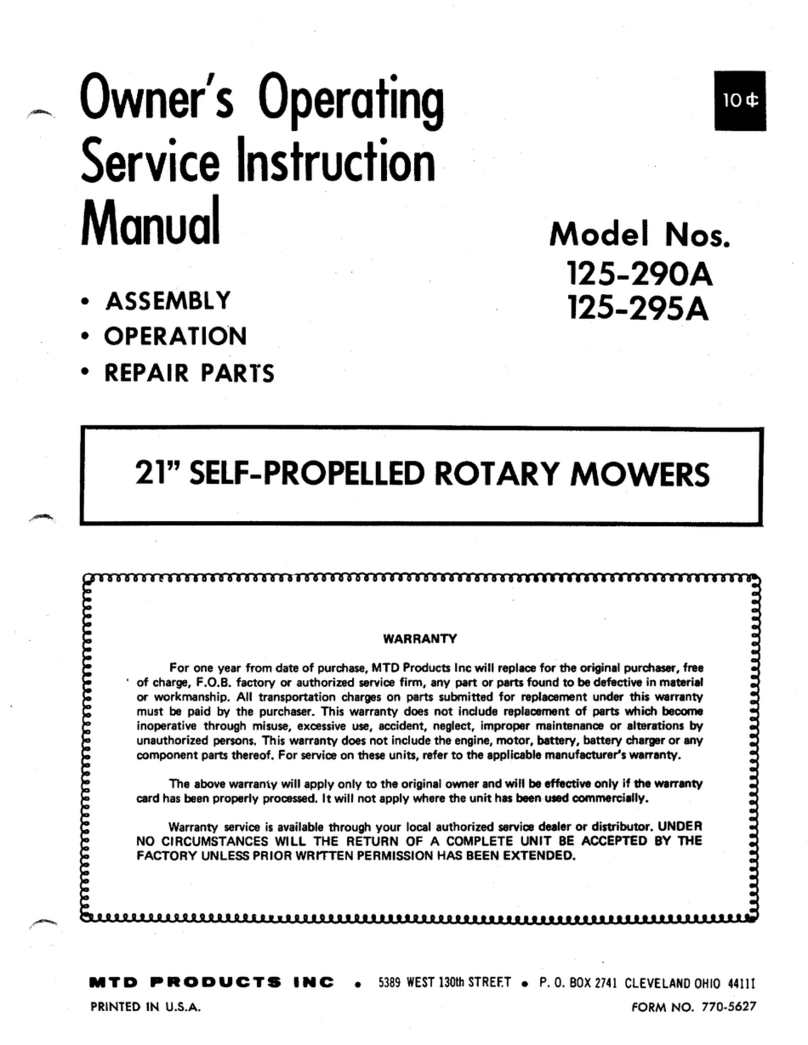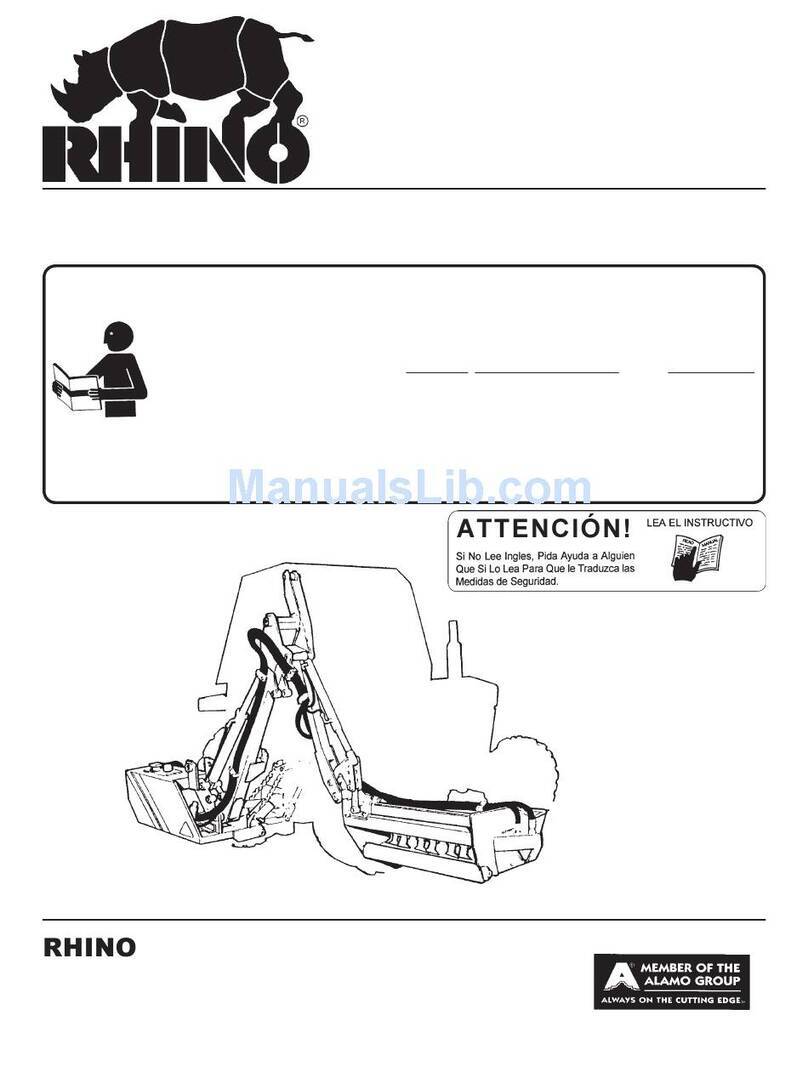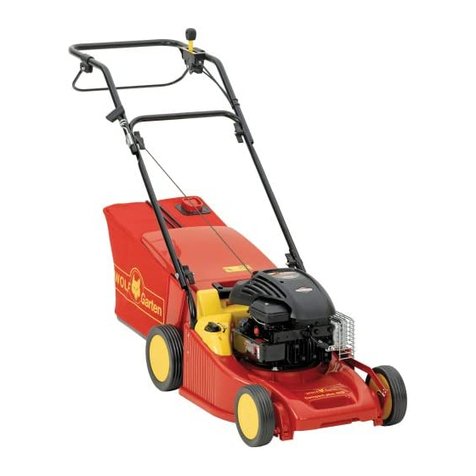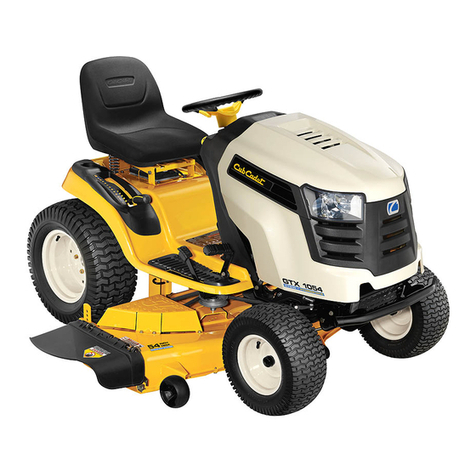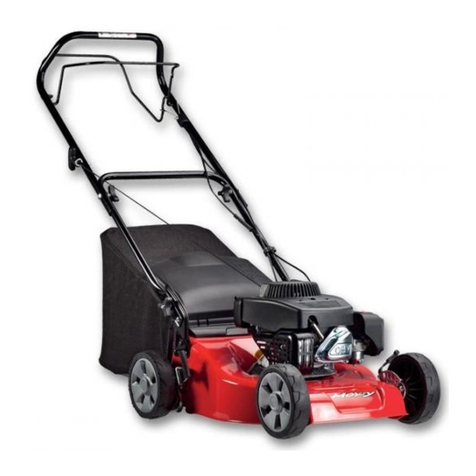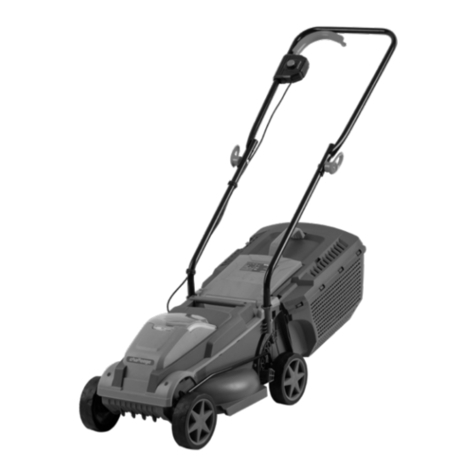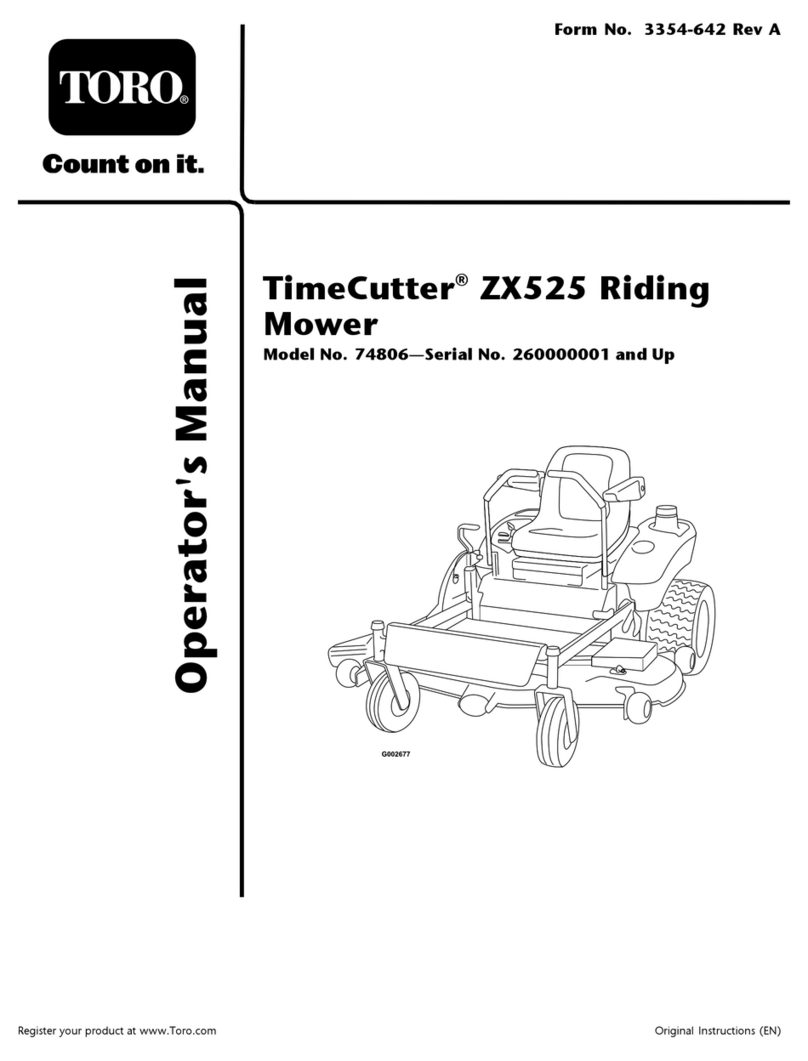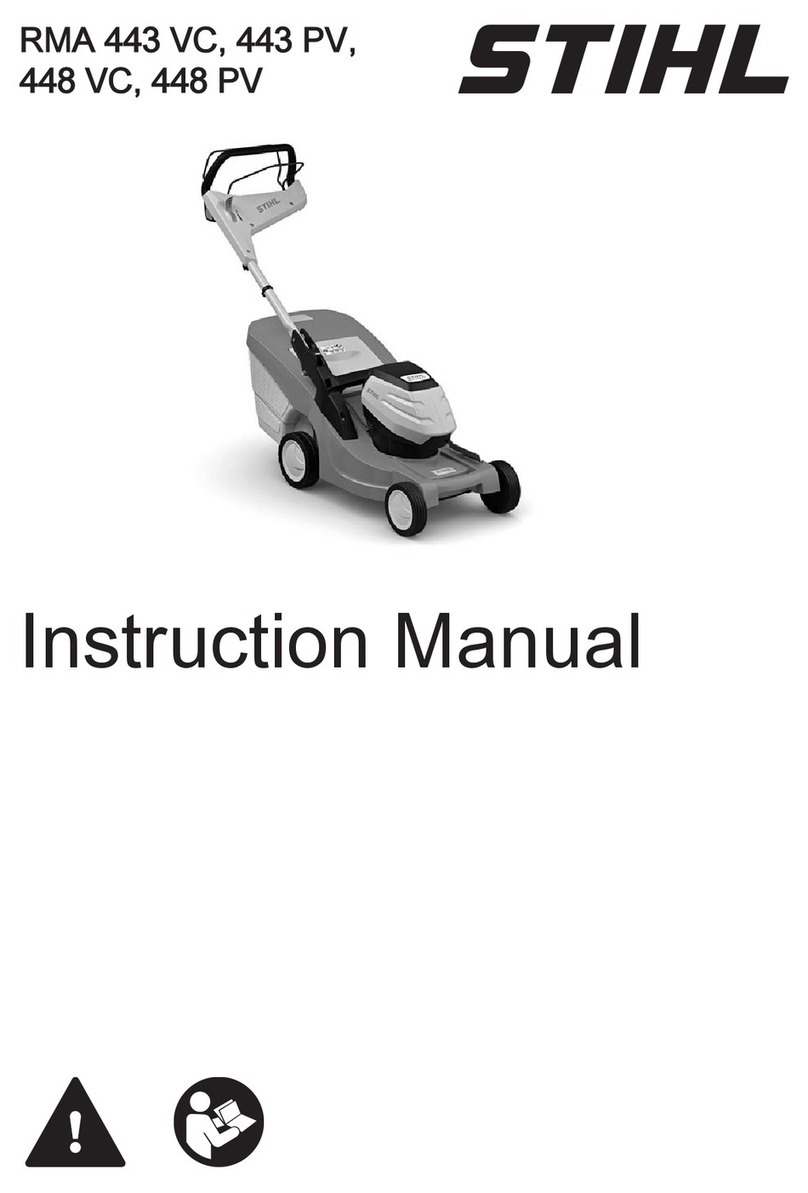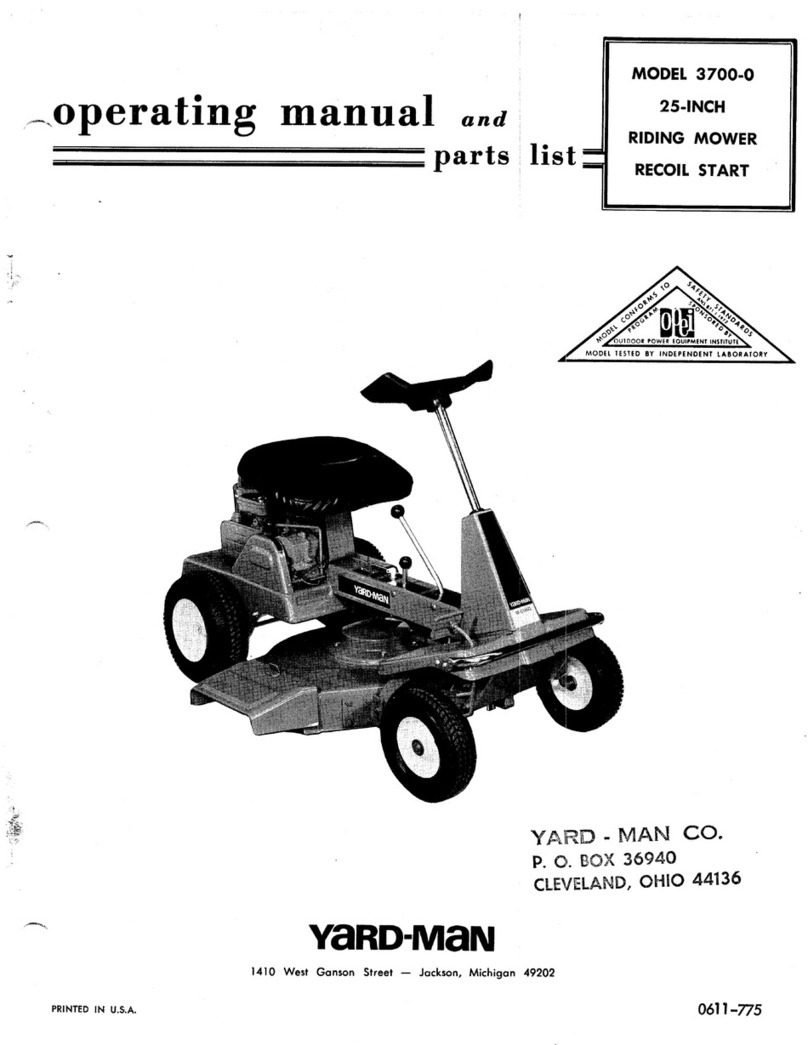
English Operating Manual
4
Contents
For your safety . . . . . . . . . . . . . . 4
Assembly . . . . . . . . . . . . . . . . . . 6
Controls and indicators . . . . . . . . 7
Operating procedure . . . . . . . . . 9
Tips on lawn care . . . . . . . . . . . 11
Transporting the mower . . . . . . 12
Cleaning/servicing . . . . . . . . . . 12
Removing/Installing and
adjusting cutter deck . . . . . . . . 13
Off-season storage . . . . . . . . . 14
Warranty . . . . . . . . . . . . . . . . . 14
Information about the engine . . 15
Troubleshooting . . . . . . . . . . . . 15
Information on rating plate
These details are very important as
they will not only be needed for
identifying your machine when
ordering replacement parts but
they will also be required by
Customer Service. You will find the
rating plate under the driving seat.
Copy all details from the rating
plate on the machine into the box
below.
This and other information about
the unit can be found on the
separate CE declaration of
conformity which is a component of
this operating manual.
Illustrations
Fold out the illustrated pages at the
start of the operating manual.
Graphical representations can vary
in detail from the appliance which
has been bought.
For your safety
Using the mower correctly
This unit is designed to be used
– as a lawn tractor for mowing
lawns in the house garden and
leisure garden,
– with accessories which are
expressly permitted for use with
this unit,
– according to the descriptions and
safety instructions given in this
operating manual.
Any other use is not as intended.
Improper use is not covered by the
warranty and the manufacturer will
reject any liability. The user is liable
for all damage done to third parties
and to their property. Unauthorized
modifications made to the mower
rule out any liability on the part of
the manufacturer for damage
resulting therefrom. This mower is
not licensed for use on public roads
or for transporting people.
General safety instructions
Before you use this machine for the
first time, carefully read all
instructions in this guide and
observe them accordingly.
Inform other users how to operate
the machine properly.
Operate the mower only in the
technical condition in which it has
been provided and delivered by the
manufacturer.
Keep this guide in a safe place
where it is readily available
whenever the machine is used.
If ownership of the mower changes,
hand this guide to the new owner.
Spare parts and accessories must
satisfy the requirements specified
by the manufacturer.
Therefore use original spare parts
and original accessories only or
spare parts and accessories
authorised by the manufacturer.
Have repair work carried out by a
specialist workshop only.
Before using the mower
If you are tired or ill, do not use
the unit.
Any person intending to use this
machine must not be under the
influence of intoxicants such as
alcohol, drugs or medicines.
This appliance is not intended for
use by persons (including children)
with reduced physical, sensory or
mental capabilities, or lack of
experience and knowledge, unless
they have been given supervision
or instruction concerning use of the
appliance by a person responsible
for their safety.
Children should be supervised to
ensure that they do not play with
the appliance.
Do not permit children under the
age of 16 to handle this machine
(local regulations may specify the
minimum age of the user).
Before you begin work, make that
you are familiar with all
attachments and operating controls
as well as their functions.
Store fuel in approved containers
only and never close to sources of
heat (e.g. heaters, stoves or hot-
waterboilers).
Replace the exhaust unit, tank or
fuel cap if they become damaged.
Observe guidelines when connec-
ting towed items or attachments to
the mower. Driving performance,
especially steering, braking
capability, and overall stability are
affected by attachments, towed
items, ballast weights and the
weight of a grass catcher when full.
While you are using the
mower
When working with or on the unit,
wear appropriate work clothes (e.g.
safety boots, long trousers, tight-
fitting clothing, goggles and hearing
protection).
Do not operate the machine if it is
not in perfect working order.
Never use the unit without an
attached cutter deck.
Never change the engine settings
preset at the factory.
Do not refill the fuel tank while the
engine is running or if it is still hot.
